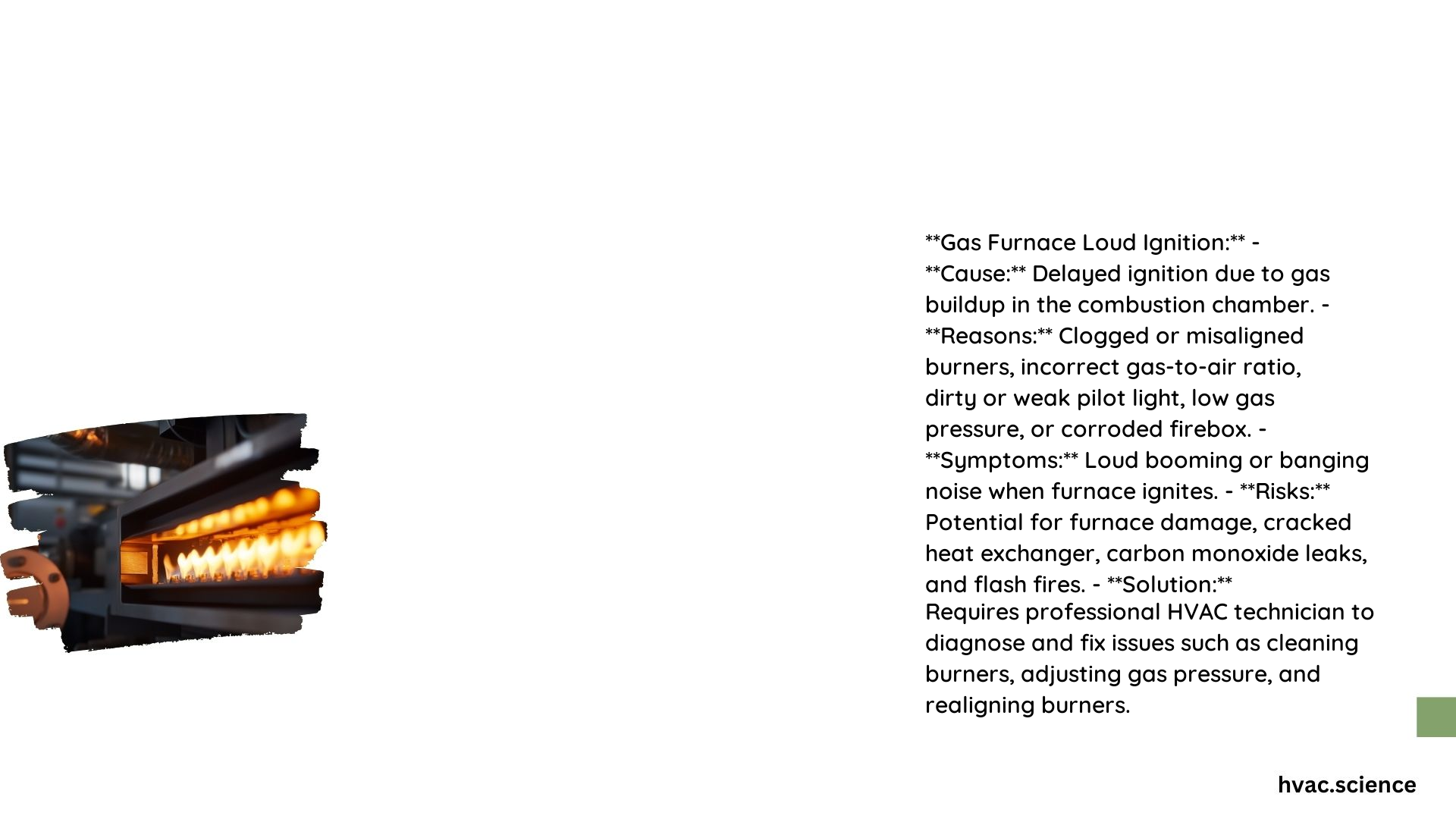Comprehensive Analysis of Gas Furnace Loud Ignition with Electronic Ignition Systems
If your gas furnace is making loud noises during ignition, it could be due to various issues with the electronic ignition system. This comprehensive guide will help you understand the common causes, troubleshoot the problem, and maintain your furnace to prevent future loud ignition issues.
What are the Types of Ignition Systems in Gas Furnaces?
- Hot Surface Ignition (HSI): Common in furnaces manufactured within the last 20 years, HSI systems are quieter than older systems and reduce fuel waste by only burning fuel when the furnace is running.
- Direct Spark Ignition: Found in furnaces from the late 1980s to the 1990s, this system lights the main burners directly and is durable.
- Intermittent Pilot Ignition: Used an automatic spark igniter to light the main burners via a gas pilot light that was always on, common in the second half of the 1900s.
- Standing Pilot Ignition: An older system that used a continuous pilot light, no longer used in central heating systems but still found in some gas fireplaces.
Why Can Electronic Ignition Systems Cause Loud Noises?
Electronic Ignition Systems are generally quieter than older systems like pilot light or direct spark ignition. However, loud noises can still occur due to several reasons:
- Delayed Ignition: This is the most common cause of loud noises in gas furnaces with electronic ignition. Delayed ignition occurs when gas builds up in the combustion chamber instead of igniting immediately, leading to a small explosion and a loud bang when the gas finally ignites.
- Gas Pressure Issues: Incorrect gas pressure can cause the burners to ignite improperly, leading to loud noises. This could be due to a faulty gas valve or issues with the gas supply line.
- Faulty Components: Problems with the ignition system itself, such as a dirty or malfunctioning igniter, can cause delayed ignition and subsequent loud noises.
How to Troubleshoot a Gas Furnace with Loud Ignition?
- Check the Pilot Light and Igniter: Ensure the pilot light or igniter is clean and functioning correctly. A dirty pilot light or igniter can cause delayed ignition.
- Verify Gas Supply: Check that the gas valve is open and the gas pressure is adequate. Incorrect gas pressure can lead to ignition issues.
- Inspect Burners and Combustion Chamber: Clean the burners and combustion chamber to ensure there is no blockage or buildup that could cause delayed ignition.
- Check for Blockages: Ensure there are no blockages in the combustion air intake or venting system, as these can cause gas to build up and lead to loud noises.
- Measure Gas Pressure: Use a gas pressure gauge to ensure the gas pressure is within the recommended specifications for your furnace.
- Clean the Flame Sensors: Clean the flame sensors to ensure they are functioning correctly. Dirty flame sensors can cause the furnace to malfunction.
- Replace Air Filters: Regularly replace the furnace air filters to ensure proper airflow and prevent blockages that could lead to ignition issues.
What Tools and Measurements are Necessary?
- Gas Pressure Gauge: To measure the gas pressure and ensure it is within the recommended specifications.
- Vacuum Cleaner: To clean the burners, combustion chamber, and other components.
- Soft Brush: To clean the pilot light or igniter without damaging it.
- Lubricating Oil: To lubricate the blower motor and shaft bearings.
- Appropriate Cleaning Cloths: To clean the flame sensors and other components without damaging them.
What Maintenance Practices Can Help Mitigate Noise?
- Annual Inspections and Cleanings: Regular maintenance by an HVAC technician can prevent corrosion and dirt buildup, minimizing the risks of gas buildup and delayed ignition.
- Regular Filter Replacement: Replace the furnace air filters every 3 months to ensure proper airflow and prevent blockages.
- Cleaning the Furnace: Clean the exterior surfaces, vacuum the furnace base and burners, and clean other components to ensure optimal performance.
What are the Costs Associated with Repairs or Replacements?
- Cleaning and Maintenance: Generally inexpensive, ranging from $50 to $200 depending on the technician and location.
- Replacing Components: Costs can vary widely depending on the component. For example, replacing a heat exchanger can be very expensive and may lead to the decision to replace the entire furnace.
- Furnace Replacement: If the issue is severe and the furnace is old or damaged, replacement costs can range from $1,000 to $5,000 or more, depending on the model and installation costs.
What Recommended Products or Devices Can Help?
- High-Efficiency Furnace Filters: Regularly replacing these can help maintain airflow and reduce the risk of blockages.
- Gas Pressure Gauges: For measuring gas pressure to ensure it is within specifications.
- HVAC Maintenance Kits: These kits usually include cleaning cloths, lubricating oil, and other necessary tools for regular maintenance.

